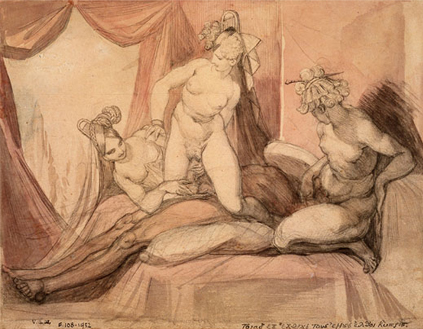Love is blind, they say, but not so blind we should be fooledinto mistaking the miscellaneous collection of sexual imagery now on show in Paris for a serious analysis of 'Amours'
With "Amours", this summer's main attraction, the Fondation Cartier in Paris proves, among other things, that the Infuriatingly Gallic Themed Exhibition is not yet a thing of the past. The theme, in this case, is the oldest one of all. In the name of Love, a bewildering miscellany - drawings, paintings, statues, ethnographic items and objets de vertu, variously amorous, erotic and fetishistic in character - has been assembled. The result is a kind of cave, or grotto, devoted to the polymorphous passions of mankind. The works are intriguingly, if not always explicably, juxtaposed and it is difficult to say whether the effect is meant to be titillating or edifying or both.
The exhibition begins with a clumsy proposition: a huge pink simulacrum of a woman's breast, for which the relentlessly crude soi-disant experimental artist Cesar is to be held responsible. Breast, 1966, may or may not have been inspired by the martyrdom of St Agatha. The amputated gland, hung on the wall like a stag's head in a trophy room, is certainly an extremely unpleasant object.
Moving briskly on, the visitor is invited to peruse old newsreel footage of the abdication crisis of King Edward VIII, playing over and over again on a television screen set into one wall of the gallery. He is there, presumably, as a symbol: the king who became a fool for love.
Nearby we encounter the 14th-century BC Pharaoh, Amenophis IV Akhnaten, or at least part of him - like the Cheshire Cat, he survives only as his smile, a pair of full and somewhat cruel carved lips, perpetually amused...

Love's labours lost
12-08-1997

